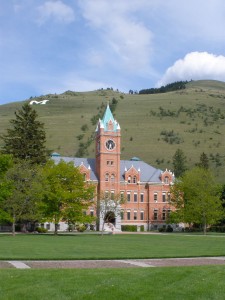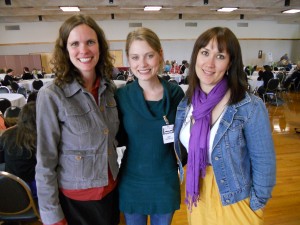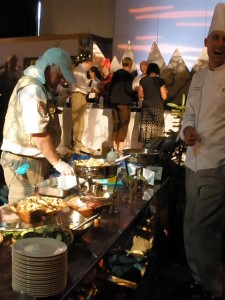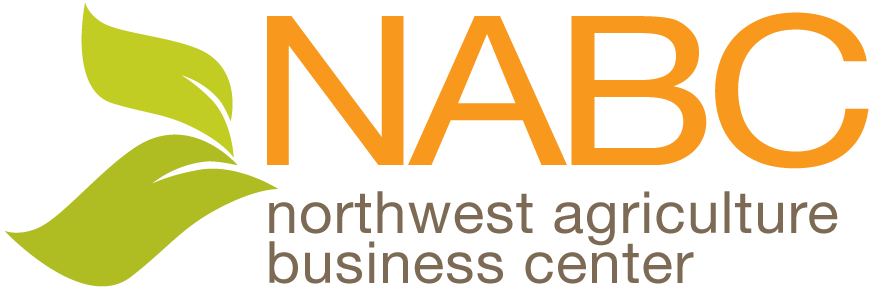PSFN Under the Big Sky!
PSFN’s Operation Manager, Ann Leason, and Farm to Community Coordinator, Emma Brewster, spent this last weekend in Missoula, Montana attending the 2011 Joint Annual Meetings of the Agriculture, Food, and Human Values Society (AFHVS), Association for the Study of Food and Society (ASFS), & the Society for Anthropology of Food and Nutrition titled Food and Agriculture Under the Big Sky: People, Partnerships, Policies.

The meeting in Big Sky Country was just what the conference title promised: a tremendous convergence of all folks food (we met gastronomy students, nutritionists, produce distributors, winemakers, Thai agronomy students, chefs, grocers, sociology professors, corn farmers, policy makers, buffalo ranchers, food anthropologists, cookbook authors…) all looking to think and work collaboratively on a wide array of contemporary food and agriculture challenges.
Ann and I were privileged to present on the recent work of PSFN with institutional foodservice in the Puget Sound region. Our session was titled, Equity, Health & Regional Food Economies: the Power of Institutional Markets. Ann introduced session attendees to PSFN’s work setting up and hosting its Wholesale Markets in the Skagit Valley and Seattle last summer. (This year’s Wholesale Markets will run mid-July thru early September. Contact ann@psfn for more info on buying and selling). Ann spoke of the successes of the Wholesale Markets for PSFN Members– producers and buyers alike! She shared anecdotes of Chef Chris Johnson’s overhaul of the Coho Cafe at United General Hospital and how sponsor Wholefoods picked up Dale Sherman’s unique sugar hubbard squash to sell in all of their Washington and Oregon stores. I then presented PSFN’s involvement in the CDC-funded Farm to Table (F2T) project, which is working to connect fresh fruits and vegetables from local producers to typically underserved consumers in Seattle and King County. The Wholesale markets, namely working with Chef Chris Johnson and Chef Peter Roberge of Skagit Valley Hospital, as well as PSFN’s periodic cooperation with Washington Physicians for Social Responsibility opened PSFN’s eyes to the opportunity of institutional purchasing to local producers and thus and opened the doors for the F2T Project.

Also on our panel was Crissie McMullan of Grow Montana, and one of the founders of Montana FoodCorps, and now advisor to the National FoodCorps program. Crissie also works for the National center for Appropriate Technology. Crissie shared her work integrating locally produced products into the University of Montana, Missoula dining halls, and in establishing the FoodCorps program first in Montana and now as an advisor to the development of a national Food Corps. Together, we were able to speak about farm-to-institution purchasing specific to hospitals, senior meal programs, childcare, elementary schools, and university cafeterias. Our session harnessed a decent-sized and active audience: a mix of academics, farmers, students, educators, non profit groups, and others. One of the most interesting attendees was a representative of the Center for a Livable Future of Johns Hopkins’ Bloomberg School of Public Health. The mission of this institute is to bringing together research and thinking on the confluence of agriculture, food, and public health – a liaison which, for us, became somewhat of a theme of the whole conference.
The Keynote Address solidified this theme of food and health. Albert Borgman, Regents Professor of Philosophy at the University of Montana since 1970 and former classmate of Wendell Berry, delivered “The Culture of the Table: Reweaving the Contexts of Celebration.” Borgmann quoted Aristotle, reminding us that “nutrition and growth are marks of life,” uniting and syncing all creatures. In this way, Borgmann called eating a universal act which has the perhaps unique capability of uniting necessity and transcendence.
Borgmann pointed to food’s unique ability to both playing a role in determining culture, and to indicate and communicate the culture of a family or community to others. Anyone who has shared a meal abroad or with a family of another culture can attest that eating has the power to “disclose the world we live in.” The way we eat is a response to the world we live in whether illustrating culturally-steeped meals using food food endemic to a region, or by illustrating the now complicated, perhaps multinational system through which food arrives at our plates.
Borgmann spoke of this transformation of food, eating, and living over the last century saying, “the mark of a new epoch is when the inconceivable becomes the plausible.” Indeed, so many inconceivable ideas are now commonplace in modern life, and especially in modern food production in America (and elsewhere, I presume, as Dr. Borgmann himself hails from Freiburg, Germany). Borgmann posited that Because of technological development and the differentiation of spheres in American life and labor and productivity, America has experienced a loss of “competence and comprehension.” That once, every person knew an essential, marketable skill, whether they were a baker, smith, or a miller. Because of this, individuals were capable and indisposable in their communities– resilient communities of interdependent skilled individuals.
Now, individuals and communities are less skilled, less engaged with one another, and therefore less resilient. The table, (both in literal and figurative interpretations– think of the expression for collaboration and cooperation,“coming to the table”) has the power to reweave the resiliency of communities through engagement and health. As he said it, the table designates the place where we eat. It is like the picnic blanket which, though somewhat arbitrary, when laid on the ground distinguishes the civilized from the uncivilized, creating a stage and a space for eating. The table then, in comparison, elevates and stabilizes that place of security and civility, (just as families coming together for meals stabilizes family life and health).
The table is a Gathering place. It gathers people– people who are dear to one another, who are accepting of one another, and who have agreed to sit with one another. It gathers food from many places, and it gathers “strands of diverse views of the world into a fabric of understanding.” Borgmann reminded us that “you cannot gather what has no extension” and that things that may be gathered are inherently things that can be traced… whether to the grocery store, to the farmers’ market, or to the original source. It is this traceability, he thinks, that will begin to restore competence and comprehension to American families.
With this traceability of food in mind, Borgmann challenged the audience to “push people to what’s better and better within the limits of the possible.” This method is very much a theme in PSFN projects, especially in the Farm to Table project where limited budgets, time, and cook skills limit the use of whole, fresh fruits and vegetables in senior and childcare meal programs. We all try to work together to do the best we can with what we have, and that’s a success!

Other conference Events included a beautiful exhibit of documentary photographs by Katie Knight, “Montana Solutions: A Documentary of Grassroots Leadership” (view here) and “Feast,” the conference dinner event showcasing locally-sourced Montana foods.
And of course, no visit to any new city is complete without a visit to the local Farmers’ Market, and Ann and I gave it a thorough “professional investigation” Saturday morning. We sampled delicious Raspberry Chipotle Sauce (much like that of PSFN friend Aldrich Farms) which the producers suggest pairing with BBQ chicken or marinated flank steak. We (expectedly) found some buffalo jerky, and (unexpectedly) some shrimp ceviche…? At least the tomatoes were local!
All in all, it was a marvelous conference. We met a wonderful diversity of very interesting, smart, and hardworking folks, all working in different ways to study or change the evolving food system. It’s rumored that next year’s meeting will be held in New York City, if you’re interested in joining the caravan to the big city!
For more photos of the conference, visit our Facebook Page
